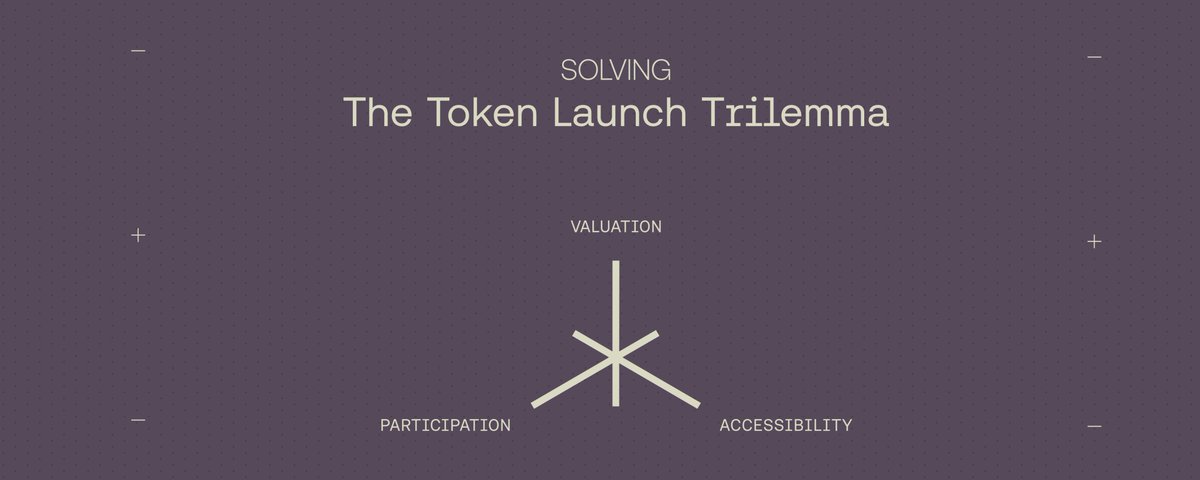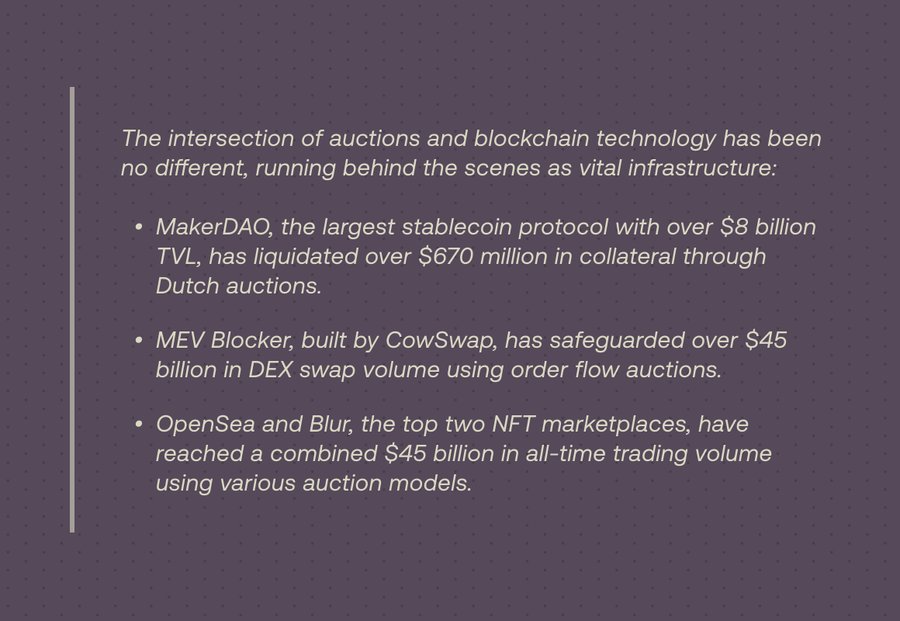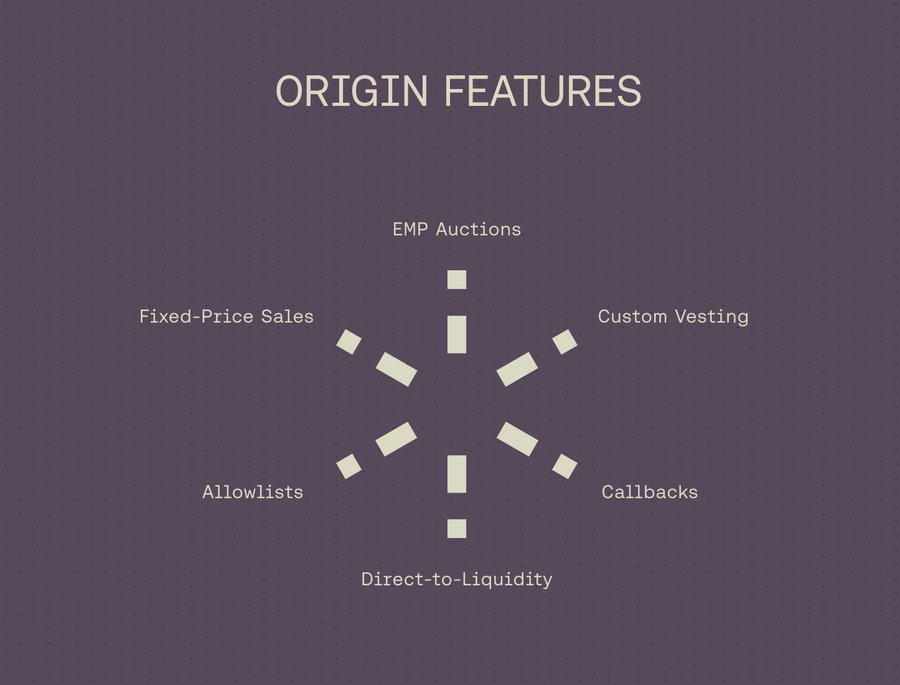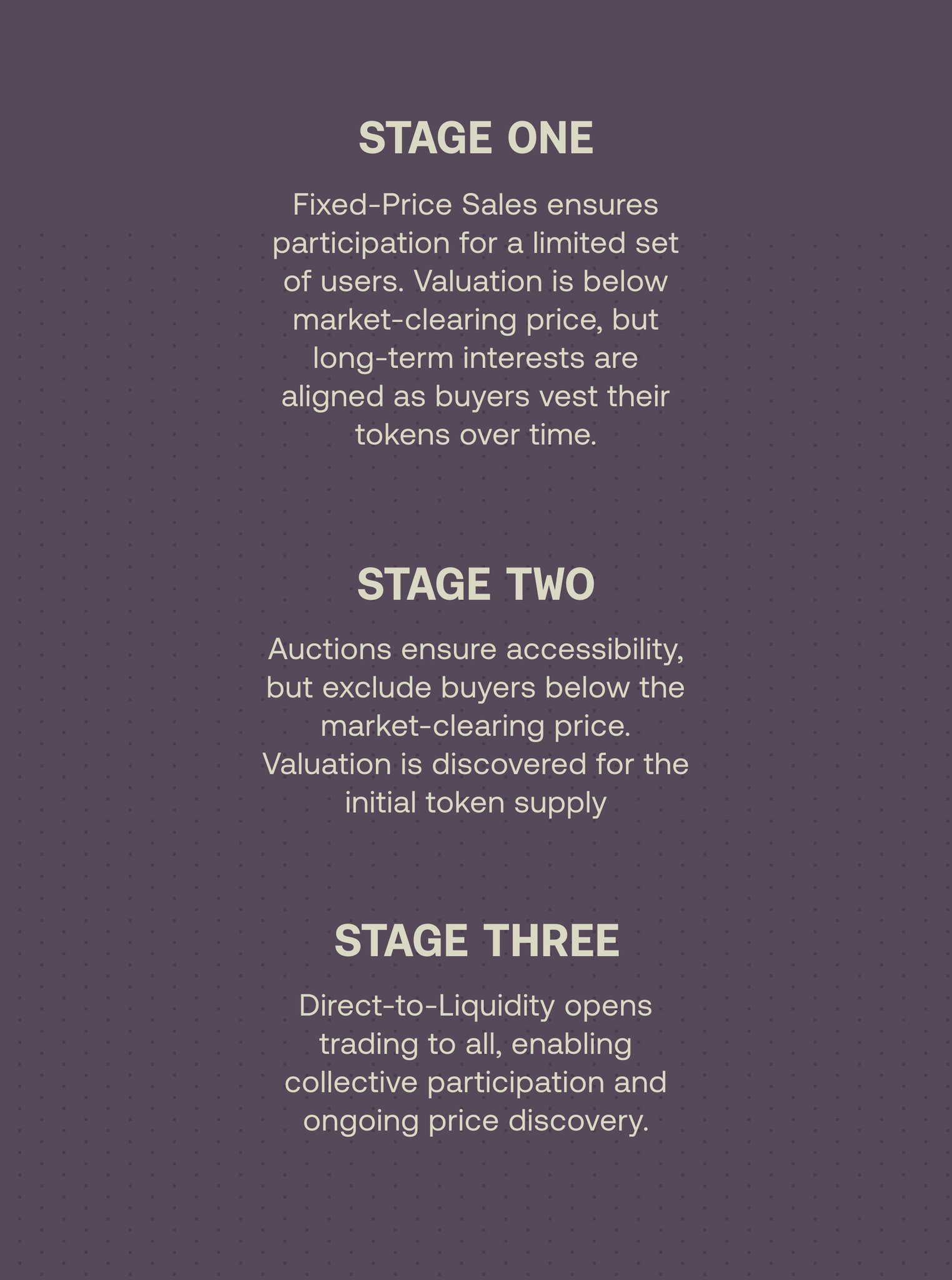By finding a balance between accessibility, participation, and valuation, Origin has become a leader in the next generation of token issuance.
Author: Axis
Compiled by: Deep Tide TechFlow

In our previous article, we explored the Token Launch Trilemma and introduced three key elements that any token issuance must focus on—Accessibility, Participation, and Valuation. At the end of the article, we mentioned that Axis is a modular auction protocol that can help users easily host auctions for ERC20 Tokens, potentially breaking this trilemma.
Auctions, as an effective tool for price discovery, are backed by a specialized field of study—Auction Theory. Reflecting on what we mentioned in our first article, auctions have helped manage and facilitate billions of dollars in transactions within the crypto space.
However, in the context of token issuance, current solutions have not been fully optimized and have failed to tap into the full potential of auction design. Origin is a set of token issuance tools we developed, aimed at changing this situation and finding the best solution within the trilemma.
The combination of selling and blockchain technology plays an important infrastructural role in the industry, supporting operations in several key areas:
MakerDAO: As the largest stablecoin protocol currently, it has a total locked value (TVL) of over $8 billion and has successfully liquidated over $670 million in collateral assets through Dutch auctions.
MEV Blocker: Developed by CowSwap, this tool protects trades on decentralized exchanges (DEX) through an order flow auction mechanism, safeguarding over $45 billion in trading volume.
OpenSea and Blur: As two leading NFT trading markets, these platforms have surpassed a total trading volume of $45 billion and have adopted various auction models to optimize trading experiences and price discovery. These examples fully demonstrate the widespread application and indispensable role of auction mechanisms in the blockchain ecosystem.

So, where is the problem? And why do these issues arise?
Traditional launch platforms repeatedly use the same outdated strategies across multiple market cycles, despite their obvious flaws. Fixed-price ICOs remain a common choice, but why do we always revert to this method? We might refer to @VitalikButerin's analysis of the issue of fixed-price sales being below market clearing prices in a 2021 article. He pointed out two main reasons: concerns about fairness and managing community sentiment.
"The basic principle of managing community sentiment is simple: you want prices to go up, not down… To avoid price drops, the only way is to set the sale price low enough to ensure that the market price after the sale will almost certainly be higher. However, how can this be achieved without triggering a 'rush' phenomenon (which ultimately forms another form of auction)?"

Out with the old, in with the new!
Origin provides a specially designed set of tools aimed at addressing these complexities and solving the "Token Launch Trilemma." While each auction type in Axis can be used independently, a multi-stage token issuance strategy that combines the advantages of different systems may be the more ideal choice.

Fixed-price sales
In the first phase of issuance, the project party can initiate a fixed-price sale, operating on a "first-come, first-served" basis. Our smart contracts offer an optional whitelist feature that can restrict participation to early community members. Additionally, Axis supports phased token releases to users, with release times being flexibly configurable—defaulting to standard linear vesting, but also allowing for custom or third-party solutions. This design is crucial for aligning incentive mechanisms. Early community members wishing to purchase tokens below the market clearing price need to obtain their tokens through a gradual release, ensuring a balance of long-term interests.
EMP Auction
In the second phase, the project party can utilize Origin's flagship auction mechanism to discover the market clearing price of the tokens. In the next article, we will explain the Encrypted Marginal Price (EMP) system in detail. Simply put, this system allocates tokens to the highest bidders, with the clearing price determined by the last successfully filled bid. Discovering the clearing price of the tokens is crucial as it lays the foundation for the final phase of Origin—liquidity issuance.
Direct to Liquidity
Origin's auction mechanism offers a unique "Direct-to-Liquidity" feature that enables instant liquidity for tokens on decentralized exchanges (DEX). This means that the funds raised from the auction can be directly used to establish an initial liquidity pool, and users can flexibly choose to use all or part of the funds. This feature is optional and highly customizable, ensuring that bidders clearly understand how their funds will be used before the auction. Compared to traditional processes that require manual operation and are prone to errors, this design adds a layer of programmatic security to the entire process.
It is important to note that accurately determining the clearing price of tokens requires careful analysis. Therefore, users who are less familiar with auction valuations may prefer to wait until the tokens are listed on a DEX before participating in trading.
How Origin Solves the Token Launch Trilemma
Now, let’s review Origin's multi-stage approach within the framework of the Token Launch Trilemma:
First Phase
The fixed-price sale aims to attract a specific user group to participate. The pricing in this phase is below the market clearing price, but buyers need to gradually unlock their tokens over time, aligning their long-term interests with those of the project party.
Second Phase
The auction mechanism ensures broader user participation while excluding buyers who bid below the market clearing price. At the same time, the market valuation of the initial token supply is established.
Third Phase
The direct liquidity mechanism opens trading to everyone, promoting collective participation and supporting ongoing price exploration and discovery.

Returning to Vitalik's perspective mentioned in our first article on the Token Launch Trilemma, he proposed a strategic trade-off:
"We can slightly compromise on the assurance of participation and mitigate its impact by introducing time as a third dimension…
In any case, uncertainty in valuation or uncertainty in participation is always difficult to completely avoid. However, when there is room for choice, it seems wiser to prioritize accepting uncertainty in participation while minimizing uncertainty in valuation."

Origin's phased issuance strategy is a concrete practice of these insights. By gradually expanding participation, each phase optimizes one core aspect of the trilemma, while all phases together form a balanced overall strategy. This design ensures that although there may be some uncertainty in the processes of participation and valuation, the structure of the issuance strategy can maximize the overall interests of both the project party and users.
This approach not only effectively addresses the complexities of the Token Launch Trilemma but also sets a new standard for how tokens are brought to market. By finding a balance between accessibility, participation, and valuation, Origin has become a leader in the next generation of token issuance.
免责声明:本文章仅代表作者个人观点,不代表本平台的立场和观点。本文章仅供信息分享,不构成对任何人的任何投资建议。用户与作者之间的任何争议,与本平台无关。如网页中刊载的文章或图片涉及侵权,请提供相关的权利证明和身份证明发送邮件到support@aicoin.com,本平台相关工作人员将会进行核查。




